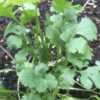Cornflower (Centaurea cyanus and Centaurea montana)
Flowers: June to September. Height: Up to 75cm (30in).
The Latin name Centaurea came from the legend of the centaur Chiron, who was wounded by an arrow poisoned with the blood of the Hydra (a huge poisonous water snake), but his wound was healed by covering it with cornflowers. Commonly known as Bachelor’s Button, Blue-bottle and Mary’s Crown as it became a symbol of the Queen of Heaven, Mary, and Christ, and was often depicted in paintings of the Middle Ages and the Renaissance and in medieval manuscripts.
Medicinal: With its anti-inflammatory and astringent properties, a wash made with cornflower blossoms was used for eye ailments to combat dark circles around the eyes and for varicose veins and bruises. The seeds or leaves taken in wine were known to resist all poisons and also used to treat the plague and pestilential fevers. The blue blossoms infused in water had a calming effect on nervous disorders. An infusion of flowers was used as a hair tonic.
Culinary: The flowers were eaten raw, dried or cooked or used in teas and spices. Petals, in raw or dried form, were added to salads, or deserts as a garnish.
Magic & Myth: In folklore it was a symbol of tenderness, fidelity and reliability. Cornflowers were worn by young men in love and if the flower faded too quickly, it was taken as a sign that the man’s love was not returned.




